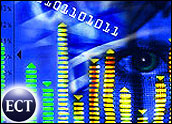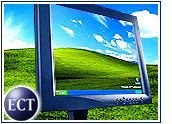
“How do I love thee? Let me count the ways.” Whether we “love” our operating systems or not, counting how many of us use which platforms has become a favorite indoor sport for IT trend-watchers and marketing gurus alike.
Why would it matter, unless you’re a vendor’s shareholder?
First, of course, there’s the question of vision: Just whose idea of how IT should look tomorrow will prevail? Then there’s critical mass. The simple fact that a particular OS has a vast installed user base tends to perpetuate it. Buyers know — or at least hope — that training and support will continue to be available from a major vendor and that their investment will be safe, or as safe as anything gets in this business. They can rest assured that applications will continue to be written for that architecture.
But size isn’t everything. Of two platforms offering similar functionality and security, the less expensive will have a market edge, a fact not lost on the legions of companies and governments considering a move to open source.
Out for the Count
Like any statistics, market share figures are subject to many factors that can affect the resulting pattern. Some are coincidental; others may be intentional. Are they tracking sales or users? New orders or existing user base? Servers or desktops? Domestic or worldwide?
For example, any guesses on how many Linux users are out there? That question seems to be on a lot of people’s minds lately. According to The Linux Counter, there are probably somewhere between 2,747,850 and 68,689,500 Linux users worldwide. Why such a spread? Linux users are invited to identify themselves by registering on the site. The pollsters guess that between 0.2 and 5 percent of all Linux users have done so. That assumption, extrapolated, gives a margin of error of nearly 66 million.
What about worldwide Linux usage as a proportion of national populations? By that measure, the United States ranks down at number 33 in Linux use. Who’s on top? The Faroe Islands.
More subtle, but no less challenging to accuracy, are situations like the one that arose in 2000, when Gartner conducted a study in Linux penetration sponsored by Microsoft. It found that in Q3 of that year, just 8.3 percent of all new servers shipped with Linux. IDC disagreed, saying Gartner’s definition of “shipped” was too narrow, excluding in-house builds and replication of free Linux systems. IDC thought the figure should be 10 to 15 percent.
UK-based Netcraft has surveyed servers used on the Internet and has come up with three different sets of figures, depending on whether it counted by physical machines, domains or IP addresses.
Finally, the categories of OS are no longer as clear-cut as they used to be. Apple’s MacOS, for instance, is sort of proprietary, but the current version is built on a BSD Unix base with substantial open-source contributions. And it has been pointed out that, like Apple, not every vendor competes — or even wants to compete — in every market segment.
Painting by Numbers
Bearing these warnings in mind, what follows is not comprehensive, just a few snapshots from sources that do not necessarily agree. The desktop scene is most easily analyzed. Most pundits seem to agree that Microsoft will maintain its nearly total dominance for the foreseeable future — which is, in analyst-speak, until 2007.
IDC’s most recent figures, published in October 2003, actually relate to new licenses issued the previous year, when Microsoft clients overall amounted to 93.8 percent of the total. Linux desktops accounted for just 2.8 percent. Tom Bajarin of analyst firm Creative Strategies says IBM might be pushing for Linux on the desktop, but not for dropping Windows.
“Even if IBM gets behind it,” he says, “they no longer have the kind of clout at the client level to drive the Linux desktop beyond its use in specialized markets.” He adds that “if HP or Dell decides to join this movement, than all bets are off,” but he considers that outcome unlikely.
Laura DiDio, a senior analyst at the Yankee Group, surveyed the market about six months ago, polling 1,100 firms worldwide. She found that most ran a mixed shop: 86 percent of her sample were still running Windows NT workstations, while 48 percent still had Windows 98 someplace. While Windows XP has been available since late 2001, IDC estimates there are 58 million copies of Windows 98 still installed worldwide, making up 20 percent of Windows licenses. Microsoft, which had planned to pull the plug on support for Windows 98 this month, has just extended it to 2006.
In the Yankee Group sample, 57 percent used Windows 2000, said DiDio, and 72 percent used Windows XP, although less than 20 percent of those users said XP accounted for the bulk of their screens. With what Newsweek estimates as 25 million users, Apple’s MacOS has — depending on whom you ask — something like the same percentage as Linux.
Server Complexity
In the server market, the picture is more complex, and different market segments show different results. DiDio does offer some global snapshots: “It’s pretty clear that Windows 2000 Server is the standard for most companies,” she said. A full 63 percent of her sample had it, with almost 40 percent mixing it with Windows NT 4. NetWare accounted for just 23 percent. “I was surprised,” she said, “that NetWare had fallen so far, so fast.”
Linux accounted for some 29 percent, a figure DiDio expects will rise to 35 or 40 percent in the next survey. “But the percentage who say they’ve standardized on Linux as their enterprise server is going to be much lower, particularly in the high end.”
DiDio concurs with most other observers that Linux’s increasing adoption generally has not been at the expense of Microsoft, but of “mid-range Unix stuff.” Geography plays a role, too, with Linux embraced more eagerly in Europe and the Asia-Pacific region than in the United States. In Web servers, some hold that Apache still seems to be a dominant force. Netcraft’s numbers suggest it holds two-thirds of the market, with Microsoft’s IIS running a distant second on not quite 20 percent.
But rival researcher and Microsoft partner Port80 claims its sample is more focused. It shows 53.6 percent using MS IIS, with Apache at 18.9 percent, Netscape at 18 percent and the rest under 10 percent.
“Software vendors don’t want to talk about the fact that, to a large degree, the underlying server operating system has been commoditized,” DiDio concluded. “What really becomes the premium — in terms of services and cost — are the applications running on top of that foundation.”










































